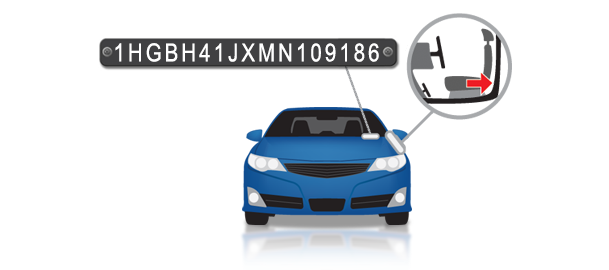The Vehicle Identification Number (VIN) is a unique identification number for each car. It is used to track the vehicle's history and can also be used to determine the car's specifications and manufacturing date.
The VIN can be used to obtain useful information about your car, such as the year of manufacture, brand, model, engine type, mileage, color, maintenance history, engine power, fuel tank capacity, fuel type, and other details that you may not know about your car, and more.
What is the Vehicle Identification Number (VIN)?
Firstly, the Vehicle Identification Number (VIN), often referred to by its abbreviation VIN, is a vehicle's identification number. It consists of approximately 17 characters and can be found in various locations, such as above the dashboard on the left side, in the vehicle's documentation, or even on the door frame. Each character in the VIN carries specific information about the vehicle, and these details are typically interpreted as follows:
From left to right:
- The first character represents the country where the vehicle was manufactured. For example, 1 might indicate the United States, 2 for Canada, and so on.
- The second character indicates the name of the manufacturing company in that country. For instance, if the vehicle is from the United States, and the code is G, it suggests the manufacturer is GM.
- The third character specifies the model and type details. For example, if the company code is GM and the third digit is 1, it signifies Chevrolet, and if it's 3, it indicates Oldsmobile.
Among the VIN characters, the eighth character is one of the most significant ones and is commonly used to denote the engine type (engine code), providing insights into engine details.
Information You Can Get About Your Car
Here are some pieces of information you can obtain about your car by entering the VIN (Vehicle Identification Number) or chassis number:
- Brand and Model: You can use the VIN or chassis number to determine the exact brand and model of the vehicle.
- Year of manufacture: You can use the VIN or chassis number to identify the year in which the car was manufactured.
- Type of car: The VIN or chassis number can be used to determine the type of the vehicle, such as a sports car, family car, or truck.
- Ownership History: You can use the VIN or chassis number to identify the individuals who previously owned the car.
- Technical History: The VIN or chassis number can be used to identify any technical issues or accidents the car may have experienced in the past.
How to get the chassis number VIN
The Vehicle Identification Number (VIN) can be obtained from several places in the car, such as:
- Door frame
- Battery compartment
- Engine
- Under the hood
There are many websites and applications that allow you to access information about your car by entering the VIN. These websites and applications are usually free or available for a nominal fee.
5 Useful Websites to Find Information About Your Car by Entering the Chassis or VIN Number
You can obtain information about your car by entering the VIN (Vehicle Identification Number) or chassis number through one of the following websites:
1. Vin Decoderz
Vin Decoderz is a website that allows you to access information about your car by entering the VIN or chassis number. It's a useful tool for acquiring information about your vehicle, and the website is free to use. Vin Decoderz supports more than 200 car brands and models. The site utilizes a vast database of car-related information and continuously updates its data.
Vincheck.info is an online service that provides VIN verification for cars. This service can be used to gather useful information about a vehicle; simply enter your car's VIN or chassis number in the dedicated field. It's a user-friendly service that delivers accurate results.
3. AutoDNA
AutoDNA primarily offers car history reports. These reports provide valuable information about the car and depend on various sources, including DMV records, insurance records, sales records, and accident records.
4. VIN Decoder
This website provides general information about the car, such as the brand, model, year, and type.
5. Carfax
Carfax provides more detailed information about the car, including ownership history and technical history.
After selecting a website, enter the VIN exactly as it appears on your car's registration card or on the vehicle's chassis in the correct field. Then, click on "Check the VIN" or "Decode".
It's important to note that the information available about your car may vary depending on the company providing the service, and not all information may be available in some cases.
Cases of benefit of knowing information about cars via the chassis VIN number
Obtaining information about your vehicle by entering the VIN (Vehicle Identification Number) can be beneficial in various situations, such as:
- When buying or selling a car.
- When requesting spare parts or after-sales services.
- When reporting a car accident.
Tips for Using VIN Decoding Websites
Here are some tips for using VIN decoding websites:
- Ensure that you enter the VIN correctly. If you input the number incorrectly, you may not receive accurate information about your car.
- Use a reputable website. Many websites offer VIN decoding services. Make sure to choose a trusted site before providing any personal information.
- Read the terms and conditions carefully. Before using a VIN decoding website, carefully read the terms and conditions. Some sites may have restrictions on the use of the information you provide.
If you wish to learn more about your car, you can enter the VIN on one of the mentioned websites.

.jpeg)

